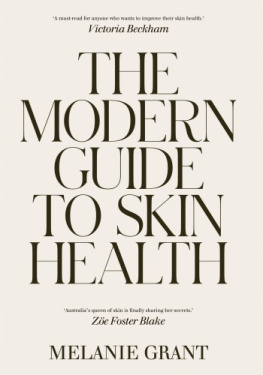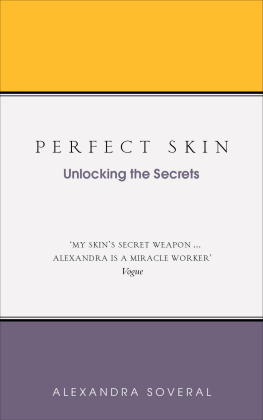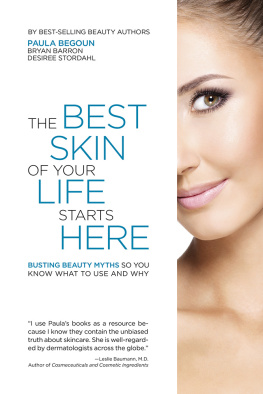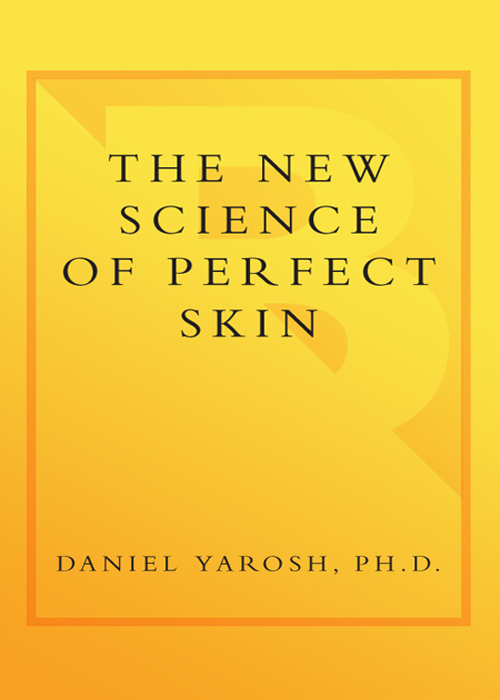

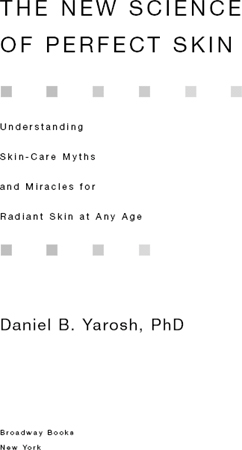
CONTENTS





ACKNOWLEDGMENTS

This book began during a dinner conversation with writer Linda Dyett, and her contributions in editing, suggesting ideas, and overall enthusiastic encouragement have been invaluable in bringing these concepts to life. I owe thanks to publicist Peggy Frank, who arranged that dinner, and literary agents Elisa Petrini, Ryan Fischer-Harbage, Kirsten Neuhaus, and David Vigliano for shepherding me through the publishing process. Karen Moline and Amy Ryan made invaluable contributions in helping me to write and edit so that, I hope, the message gets through. I appreciate Amy Hertz, Sandra Bark, and Ann Campbell at Broadway Books for recognizing that this book might have value for a broad audience.
Physicians and scientists Zoe Draelos, Richard Granstein, Masamitsu Ichihasi, Eric Johansen, Albert Kligman, Hitoshi Masaki, and Ron Moy have offered uninhibited criticism of these ideas to make the book better. Any remaining errors are of course mine alone.
I thank my compatriots in the skin-care business for their encouragement over the years, even when they didnt agree with me: Carol and Steven Kosann, Shigeru Sekine, Herve Offredo, Daniel Maes, Mary Matsui, Tom Mammone, Ken Marenus, Olivier Doucet, Leonhard Zastrow, David Brown, and Marsha Wertzberger.
I am especially grateful to my business colleagues who have supported me whether I was ahead or behind the curve: Jon Klein, Adrienne OConnor, Matt DAmico, Nick Bizios, Georgia Binns, Yesenia Plock, Ken Smiles, Fred Carr, Barbara Hayes, Phyllis Dohn, Stan Nusim, Andrew Fink, Steven Kaye, John Caplan, Tom Pew, Wayne Edwards, Fred Skolnik, Maurice Klee, and all the staff at AGI Dermatics.
Finally, I thank my family, who make this book both possible and worthwhile: my wife, Karen, and children, Haley, Jenna, and Jordan. This book is dedicated to the memory of our founding parents, Norman and Lily Yarosh and William and Sylvia Doninger.
INTRODUCTION

Welcome to the New Skin-Care Revolution
D ermatologists know skin.
But I know ingredients.
Over the last thirty years, as an inventor, researcher, manufacturer, supplier, and formulator, Ive learned all about the skin-care market from the unique perspective of a practicing scientist. After receiving my doctorate in molecular biology in 1978 from the University of Arizona College of Medicine, I spent seven years at two prestigious research institutes, Brookhaven National Laboratory in New York and the National Cancer Institute in the National Institutes of Health in Bethesda, Maryland, studying how DNA controls the skins aging process. I then decided to put my knowledge to practical use. With the support of my wife and family, I started up my own biotechnology company, AGI Dermatics, devoted solely to exploring and creating radically different new skin-care ingredients and technology, not only to help prevent skin cancer, but to improve and protect the skin of people of all ages.
These days, the ingredients developed in my lab are found in countless prestige skin-care products around the world, from brands such as Este Lauder, Coty, and Shiseido. Our own line of Remergent skin-care products is formulated from our cutting-edge ingredients and is sold in dermatologists offices and in spas and stores across the country and around the world.
Over the last three decades, Ive seen changes in the skin-care business that are absolutely astonishing. In fact, Id say were in the middle of a New Skin-Care Revolution.
You can understand why I use the word revolution if you stop to think about just how dramatically the world of skin care has changed over the last century. Next time you casually apply mascara or dash on a slick of lip gloss, consider that social norms once mandated that makeup was solely worn by stage actresses and ladies of ill repute. Respectable ladies simply did not do their faces. And when it came to skin care, treatments were limited to moisturizing salves or whitening plasters more likely to harm you than help you. Not surprisingly, cosmetics were typically sold under the counter at department stores, and products sold by apothecaries or made at home by countless women remained closely guarded secrets.
The years between the first and second world wars saw an overall change in beauty and fashion thanks to the influences of Hollywood. Studio sets were lit by blazingly hot klieg lights that showcased the slightest of bumps or lines or creases, and directors and cinematographers quickly realized that actors and actresses were in dire need of thick pancake makeup to slather on their faces. Once legitimate actresses began to wear makeup, their fans followed suit, and cosmetics finally began to come out from under the counter. Max Factor, a Russian immigrant, invented formulas especially for the movies, which in turn launched his cosmetic empire. A mixture of five different vegetable oils, developed by a chemist named Alberto for the Culver hairdressing company to protect hair from the harsh lighting, became the very successful Alberto VO5 line of hair care.
During and after World War II, when women began to flock to the workforce, the modern cosmetic industry was launched, with the rise of brands such as Helena Rubinstein, Elizabeth Arden, Este Lauder, Revlon, and many others. From day one, these brands featured gorgeous advertisements that were cunning enough to promise glamour and youth, but the actual products were designed merely to hide imperfections. We would recognize them today as moisturizers in nice jars. These creams could pump the skin full of water temporarily, but there was no way they could produce sustained benefits. How could they when the technology at the time was limited and there were so few active ingredients available? Even the cosmetic industry elite recognized these products as nothing more than hope in a jar. And for decades, thats just about all women could dopay for the jars and keep on hoping!
The first wave of the New Skin-Care Revolution began to gather momentum in the 1990s, with the introduction of several new ingredientsalpha-hydroxy acids, retinoic acid (Retin-A), and vitamin A formulationsthat really and truly had a measurable impact on skin. These were followed by advancements in chemical peels and lasers, then a whole new category of injectable substances like Botox and fillers, all of which delivered immediate benefits that lasted longer than a scant few hours. These new ingredients and procedures actually made changes in the skin by clearing away its debris, temporarily relaxing muscles, or by filling in troughs and wrinkles. Because they worked so quickly and so dramatically (making them beloved by many in Hollywood), they set a standard for fast and visible results that all products have been held to ever since. For the first time in history, women could witness their complexions becoming smoother, firmer, more buoyant, less wrinkled, less mottledrejuvenated, in fact. It was as if the clock could be turned back twenty years.
Next page


